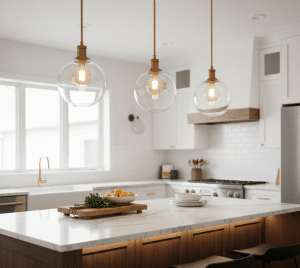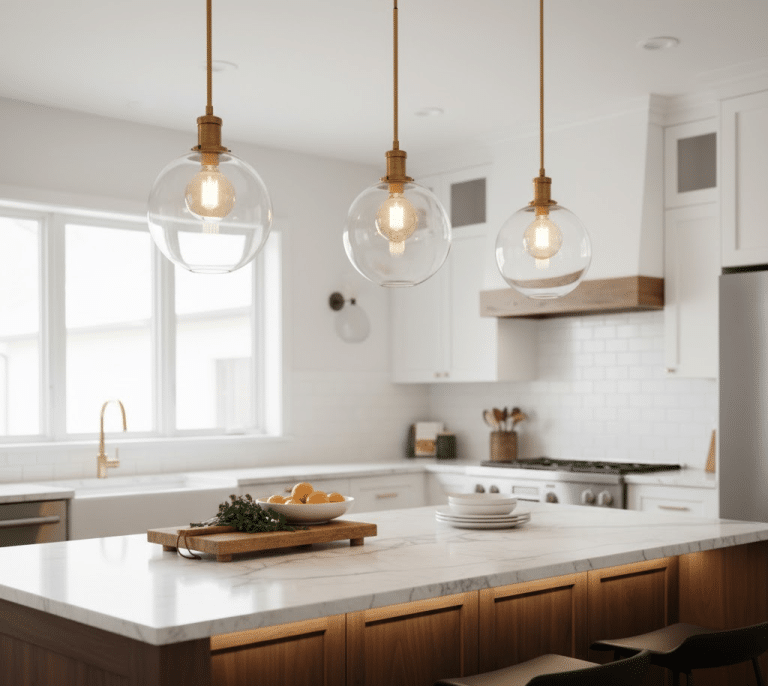Clean paint, brighter lamps, and a quiet nook may look minor, yet they shape daily feelings. Growing studies connect living spaces to mood, focus, sleep, and stress. The effect of modest home upgrades on student mental health deserves attention. Early in the term, many learners seek advice on tight deadlines and pressure.
Tools such as Writepaperforme appear in chats and study messages. Rearranging the room can bring equal power with a steady, positive impact. A tidy, well-lit bedroom or a friendly shared kitchen can lower anxiety. Simple, thoughtful changes ease common mental health problems among students.
This article explains how basic steps, from brighter bulbs to fresh plants, support the brain. These steps calm worry and improve sleep and grades. It also points toward mental health resources for college students who need support. By the end, readers see that a hinge fix or fresh color means more than décor. Home choices become care that protects well-being and strengthens routines.
Why the Home Environment Matters
The brain reads signals from the surroundings and shapes feelings and actions all day. For students, most signals arise in dorm rooms, childhood bedrooms, or small rented studios nearby. When paint peels, light stays dim, and clutter spreads, the mind marks the space unsafe.
Stress chemicals rise and rest suffers, which harms memory, patience, and attention. Across weeks, these cues feed sadness, irritability, and weak drive that drains motivation. A calm, orderly setup sends a safer message and steadies daily rhythms. Experts within school-based mental health services remind families that space acts like a helper.
The room supports focus and steadies mood during demanding weeks. Placing books on shelves, clearing floors, and opening curtains create signals the brain trusts. Clear air helps calm minds. Those signals guide behavior toward helpful routines and support healthy study across semesters.
Light, Noise, and the Calm Mind
Two senses shape nearly every room: light and sound that steer energy and focus. Daylight helps reset the body clock and steadies mood during school days. When the morning sun reaches a study corner, melatonin drops, and alertness rises. If windows stay shaded or small, switch to daylight-balanced LED bulbs for improvement.
Noise carries equal weight in shaping stress that builds quietly each day. Traffic, loud roommates, barking dogs, or a buzzing refrigerator create stress. Students notice the strain only when a silent library brings instant relief. Simple upgrades reduce pressure by softening echoes and blocking harsh street sounds.
Weather stripping around doors seals gaps, and thick curtains dampen noise along walls. A rug on hard floors cuts reflections, while felt pads quiet the scraping of chair legs. These tweaks teach students how to improve mental health by giving the system breaks. Mental health resources for college students list quiet places as a top helpful tip. Shaping the home turns that advice into a permanent setting for daily use.
Color Psychology and Décor Choices
Color sets the tone for both study and rest inside rooms and shared homes. Stark white can feel sterile, while deep red can feel too strong. Soft blues and greens slow heart rate and sharpen focus for work. These shades suit a desk zone and help eyes relax during sessions. A single accent wall refreshes the space and takes only a weekend.
Décor provides cues that shape attitude toward classwork and effort. Prints of calm landscapes or short quotes remind learners why they keep going. Personal mementos, kept tidy, build an identity that guards against loneliness. Isolation ranks among the common mental health problems among students.
Storage bins, pegboards, and open shelves keep clutter off desks and reduce noise. Teams within school-based mental health services note that order supports executive function. With calming colors and practical décor, families send a simple message of care. The room whispers support each time a student looks up from a hard page.
Smart Technology for Stress Relief
Phones and laptops remain essential for classwork, yet home tech can also aid calm. Smart bulbs shift from bright white during study hours to warm amber at night. Bodies prepare for sleep when light softens and screens dim at night. Smart plugs or simple timers cut power to devices after midnight and nudge routines.
White noise machines mask traffic and loud voices that interrupt concentration. Fans add airflow and a soft tone that lowers distractions during homework. These tools may seem minor, yet each one trims daily strain and supports focus. Mental health resources for college students suggest blending tools with counseling and groups.
School-based mental health services add coaching that turns data into actions that help. A wearable heart rate monitor flags rising anxiety during late afternoons. A counselor, mentor, or trusted friend helps shape a plan that works. Balance stays the goal, so homework shortens and free time becomes real rest.
Personal Space and Privacy
Each learner needs a spot that feels personal, even within busy, shared homes. A small divider, a lofted bed, or a curtain can create boundaries. When students control one area, they decide who enters and when. That choice lifts self-esteem and reduces friction among friends who share living spaces.
Friction often sparks mental health problems among students sharing rooms. Privacy also strengthens focus during dense reading, long labs, or timed quizzes. The brain relaxes when it trusts no one will appear behind a laptop screen. Mental health resources for college students suggest noise-canceling headphones.
Foldable screens help when building new walls is not possible. Some families worry that privacy invites isolation and weakens bonds. In truth, it teaches responsibility and time awareness during weeks with heavy workloads. Students step out to socialize after work periods instead of hiding through the night. A balanced home offers quiet corners and open areas, each with a clear purpose. When boundaries are respected, arguments drop, and the household feels safer for everyone.
Communal Spaces That Build Connection
Privacy matters, yet a welcoming common area carries equal value across busy terms. Dining tables, living rooms, or a hallway bench can become hubs for support. Furniture placed in a loose circle invites eye contact and honest talk about stress. Friends who share early reduce the chance that problems swell into crises.
Many school-based mental health services encourage peer groups with simple guidelines. Swap harsh ceiling lights for a soft lamp that warms conversation and eases tension. Add extra chairs so guests can join without a scramble or awkward standing. Hang a message board that welcomes doodles, reminders, and kind notes.
These moves help fight loneliness that often rises for students off campus. Over time, shared meals or board game nights build a net of steady support. When someone struggles, the group notices quickly and points toward resources that help. Mental health resources for college students become easier to reach through trusted social ties.
Green and Outdoor Elements
Nature calms the mind in direct ways that support learning and health. If a home includes a yard or balcony, start a small garden with hardy plants. Daily care brings rewards through color, scent, and gentle movement. Even one potted herb on a windowsill eases strain during late study sessions. Studies suggest that touching soil exposes people to microbes that boost serotonin and mood.
Where outdoor space is scarce, indoor plants still filter air and add a quiet life. Pothos and snake plants grow well with little light and little water. Five minutes under a tree or a light porch stretches can reset attention. A shaded bench or a simple hammock offers the same benefit. Exposure to daylight pairs with mild movement, such as watering pots or trimming leaves.
These acts create practical ways to learn how to improve mental health. Across weeks, small routines build daily strength for peak periods like midterms and finals.
Affordable DIY Upgrades Anyone Can Try
Home projects can sound costly, yet many useful steps cost less than a textbook. Start by clearing clutter, then donate unused clothes, dishes, and supplies to a nearby drive. A clean floor and desk instantly reduce visual strain and cut trip risks during nights. Apply peel-and-stick wallpaper to add color without paint smells or messy trays. For sound control, place weather strips along door frames and seal small gaps carefully.
Plants grown from cuttings cost nothing and still bring green life to dim corners. Each step shows students how to improve mental health through action and steady effort. Mental health resources for college students suggest breaking big goals into smaller parts. DIY projects mirror that advice by turning change into clear wins that build confidence.
Completing one tiny repair builds mastery that counters fear and supports patient progress. Across a semester, these victories add up and transform a hectic room into support. The space becomes a wellness base that protects learning and rest every day.
Key Takeaways and Next Steps
Home improvements do more than please the eye; they guard student mental health daily. Light, color, privacy, shared zones, and green areas act like quiet coaches. These cues promote better moods and make long reading sessions more manageable. When living areas feel safe and welcoming, the brain turns toward homework and projects.
It stops scanning for risk and saves energy for study and sleep. Simple moves, tightening a hinge, placing a plant, or hanging art, build habits. These habits teach how to improve mental health through small, steady changes. For anyone overwhelmed, mental health resources for college students remain essential partners.
School-based mental health services add guidance that helps other supports work well. Changes in space do not replace therapy or medication; they help those tools succeed. By viewing the home as part of care, families gain another strong option. The next step is simple; choose one small upgrade and try today. Notice the response, then pick another task and repeat the process.













